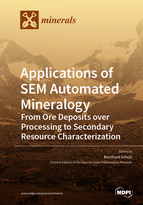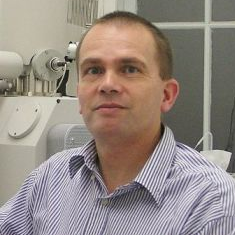Applications of SEM Automated Mineralogy: From Ore Deposits over Processing to Secondary Resource Characterization
A special issue of Minerals (ISSN 2075-163X). This special issue belongs to the section "Mineral Deposits".
Deadline for manuscript submissions: closed (15 February 2020) | Viewed by 69097
Special Issue Editor
Interests: metamorphic geology (metapelites, metabasites); monazite dating by EPMA; geothermobarometry; Paleozoic and Proterozoic orogens; application of SEM-based automated mineralogical methods (Mineral Liberation Analysis/MLA); mineral resources; analytical methods with SEM and EPMA
Special Issue Information
Dear Colleagues,
During the last decade, software developments in Scanning Electron Microscopy (SEM) provoked a notable increase of applications to the study of solid matter. The mineral liberation analysis (MLA) of processed metal ores was an important drive for innovations that led to QEMSCAN, MLA and other software platforms. These combine the assessment of the backscattered electron (BSE) image to the directed steering of the electron beam for energy dispersive spectroscopy (EDS) to automated mineralogy. However, despite a wide distribution of SEM instruments in material research and industry, the potential of SEM automated mineralogy is still under-utilised. The characterisation of primary ores, and the optimisation of comminution, flotation, mineral concentration and metallurgical processes in the mining industry by generating quantified data, is still the major application field of SEM automated mineralogy. However, there is interesting potential beyond these classical fields of geometallurgy and metal ore fingerprinting. Slags, pottery and artefacts can be studied in an archeological context for the recognition of provenance and trade pathways; soil, and solid particles of all kinds, are objects in forensic science. SEM automated mineralogy allows new insight in the fields of process chemistry and recycling technology.
We request articles dealing with the applications of SEM automated mineralogy to solid matter, material and particle analysis, in geosciences, process mineralogy, chemical technology, recycling, environmental sciences, forensic science and archeometry, and in combination with other analytical methods.
Prof. Dr. Bernhard Schulz
Guest Editor
Manuscript Submission Information
Manuscripts should be submitted online at www.mdpi.com by registering and logging in to this website. Once you are registered, click here to go to the submission form. Manuscripts can be submitted until the deadline. All submissions that pass pre-check are peer-reviewed. Accepted papers will be published continuously in the journal (as soon as accepted) and will be listed together on the special issue website. Research articles, review articles as well as short communications are invited. For planned papers, a title and short abstract (about 100 words) can be sent to the Editorial Office for announcement on this website.
Submitted manuscripts should not have been published previously, nor be under consideration for publication elsewhere (except conference proceedings papers). All manuscripts are thoroughly refereed through a single-blind peer-review process. A guide for authors and other relevant information for submission of manuscripts is available on the Instructions for Authors page. Minerals is an international peer-reviewed open access monthly journal published by MDPI.
Please visit the Instructions for Authors page before submitting a manuscript. The Article Processing Charge (APC) for publication in this open access journal is 2400 CHF (Swiss Francs). Submitted papers should be well formatted and use good English. Authors may use MDPI's English editing service prior to publication or during author revisions.
Keywords
- Scanning electron microscope (SEM)
- Process mineralogy
- Mineral liberation analysis
- Geometallurgy
- Geosciences
- Mineral deposits
- Resource technology






